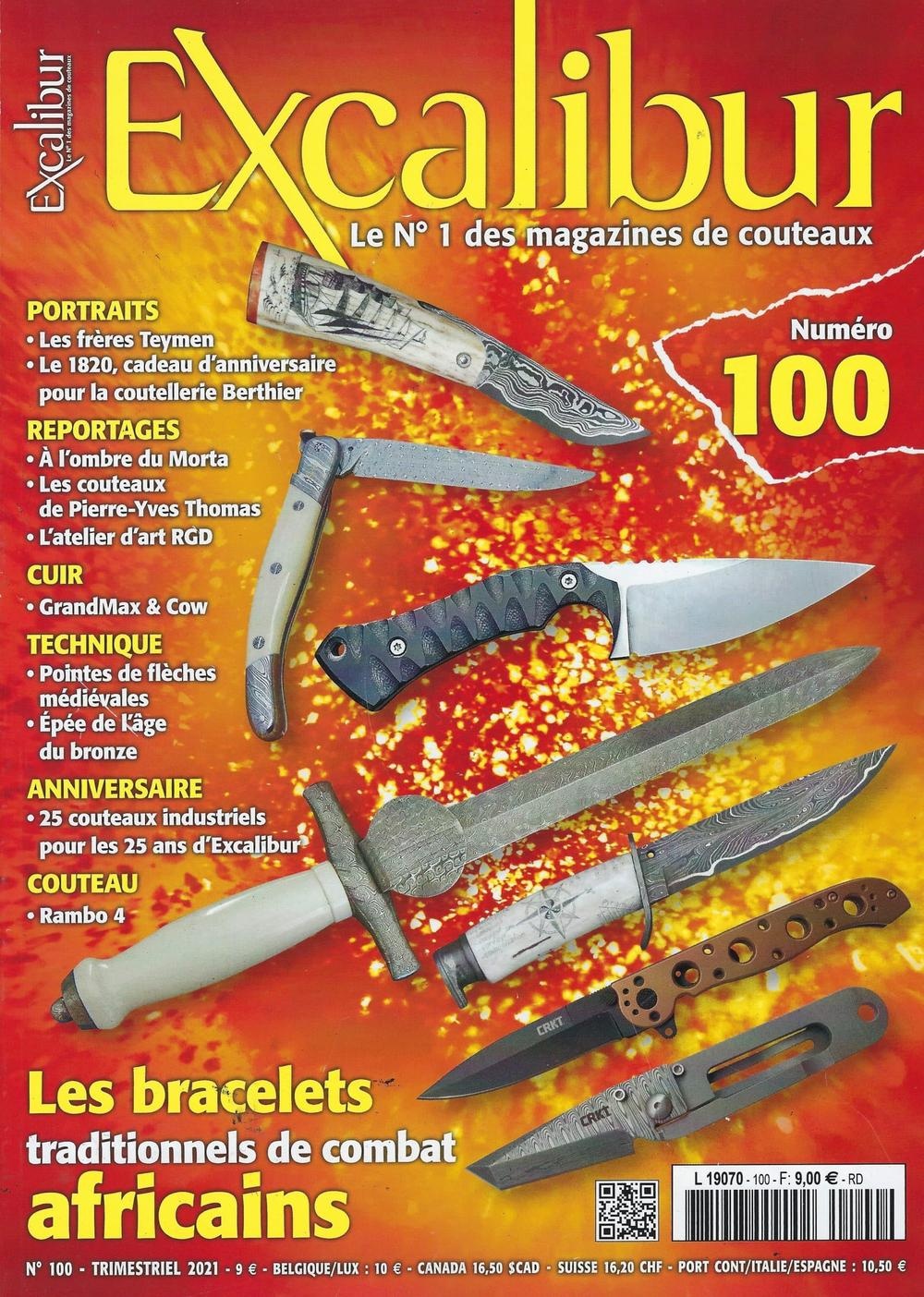Excalibur, number 1 of magazines devoted to knives, published in the first half of 2021 an article entitled “In the shadow of Morta”. Fred Marchand, professional cutler, and Didier Teste, journalist, interview Jean-Henri Pagnon. Jean-Henri, who manages Atelier JHP, an artisanal cutlery workshop in Saint-André-des-Eaux, in the Brière region and who makes the famous Morta Knives.
“There is no bad steel, just poor grinding and poor thermal treatments.” JHP.
Feedback on this interview in the form of a round table. Questions/answers between professionals at the service of fine blade fans. We’ll tell you everything about Atelier JHP.
EXCALIBUR 2021 | THE CUTLERY MAGAZINE TAKES AN INTEREST IN MORTA
Little journalistic flashback on the local star, Morta. Buried for 5,000 years in the Brière marshes, Morta is a wood undergoing fossilization. In fact, when the Brière oak forest found itself absorbed by the soil after a geological upheaval, the trunks were protected by the peat, which acted as a natural sarcophagus. Today, the artisans of Atelier JHP manually extract the trunks from the soil to work them and turn them into knife handles. We are only equipped with spades and picks and a probe to find the trunks and bring them back to the surface.
INTERVIEW WITH JEAN-HENRI PAGNON | ARTISAN CUTLER OF MORTA KNIVES
Fred Marchand, artisan cutler: Tell us about the extraction of Morta
Customers are often surprised by the “small” length of the probe. I was just talking about this to journalists from the programme Faut pas rêver. Believe me, the depth is not representative of the effort required to extract the trunks. There’s more sweat than it seems on this pole.
Didier Teste, journalist: How did you get permission to remove the Morta in the Brière natural reserve?
Well Good question! A bit of history! In 1462, François II, Duke of Brittany, gave his lands to his vassals. Even to this day, all inhabitants of Brière, including me (undivided estate) are the owners of these marshes. So I contacted the managing agent who granted me the extraction permit. Thanks to this material, I am participating in shedding new light on Brière.
Didier Teste: How did you discover the Morta?
By chance! As an eternal fan of cutlery, when I arrived in the region, which had also won me over, I was looking for the local knife. I absolutely wanted to have the same knife as all Brière locals. That’s when I saw that there wasn’t one. So I set myself this task and after five years of DIY, I read “La Brière” by Châteaubriant. I learned of the existence of this wood from him. Then my friends explained to me where to find it.
Fred Marchand: What stage of your work do you prefer?
To answer I’ll cite the French singer Bénabar: “le bonheur ne se compte pas en lingots, mais en petite monnaie” (happiness is counted in small change, not gold bars). It’s the totality of what I do that fascinates me. It’s a source of creativity, a breeding ground for imagination and I’m not just talking about making a new knife, but how to present it, distribute it, communicate and photograph it. It’s the profession as a whole that is absolutely exciting.
Fred Marchand: From a garden shed, you moved to a 120-m2 workshop with 4 employees. How do you deal with such a change?
I am torn between the feeling of being an actor in the development of my activity and being its slave. Basically, I wanted to create a brand. While people were kindly suggesting I was mad, I took the leap and I admit I didn’t imagine getting this far.
Didier Teste: Aren’t you scared of further growth?
In truth, it really is a matter for reflection. But it’s also a real need. I have the luck to be able to rely on my colleagues with specific know-how and solid expertise. So I’m going to spend time finding new premises to better respond to the demand. My workshop is square, functional, but also fun. And that’s like me!
Didier Teste: A comment on your website says that “the Morta is a living knife”. What’s your reaction?
A kind smile! People come here, have a good time and leave thanking us. Atelier JHP is a human adventure above all.
And Fred Marchand adds:
The customers say that they are entitled to a meeting when they buy a knife. You don’t just buy a blade and a handle, but also a bit of the cutler’s soul.
FROM INTERVIEWEE TO INTERVIEWER
Jean-Henri Pagnon to Fred Marchand: your knife bears your style, with “old school” touches. A marketing strategy, or the result of a sensitivity, a taste and character?
A marketing approach, it’s true, but only secondly. Style for me is a design and finishes. The finishes come from my skills, my patience and my equipment. Altogether they are roots.
MORTA | AMAZING RAW MATERIAL
Every year 15 to 20 trunks, each 5 to 10 metres long, are needed to supply Atelier JHP. After being cut up, they are stored for 2 years for drying, finalized by spending time in a drying chamber. Our cutlers extract the wood in September/October. During this period, the water level is low, making it easier for a vehicle to manoeuvre. Please note that only 10 to 20% of the material will be usable. So the search for Morta is not a bed of roses.
Remarks gathered by Didier Teste for number 100 of the specialized magazine Excalibur, first half of 2021.
This work of artistic precision has led to a magnificent collection of knives. Folding knives, fixed knives and table and kitchen knives.
For more information, contact us or come and see the cutlers in action.
If you have the good idea to visit the Guérande peninsula, the regions of Nantes, Vannes or Saint-Nazaire, we will be ready and waiting to welcome you.






